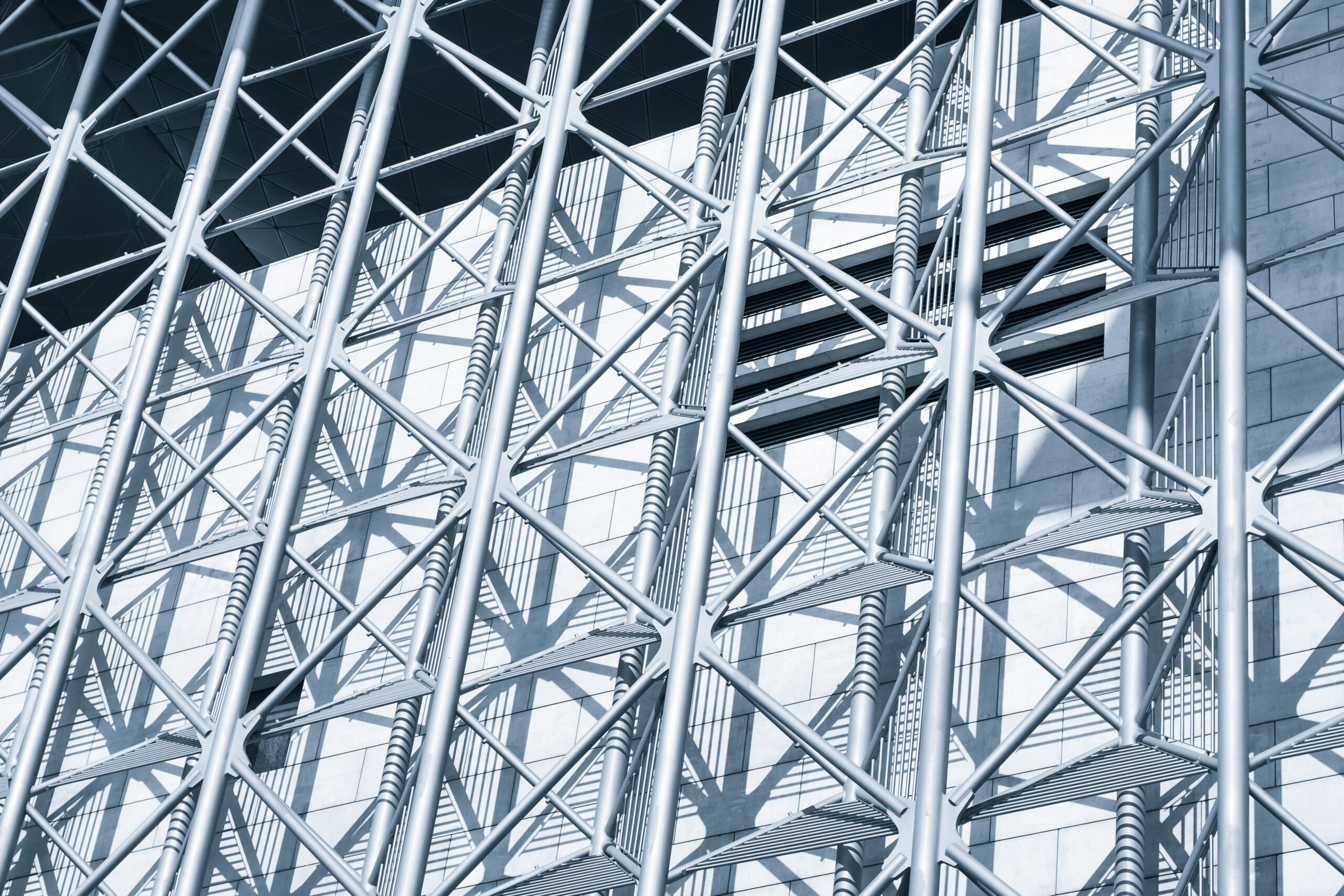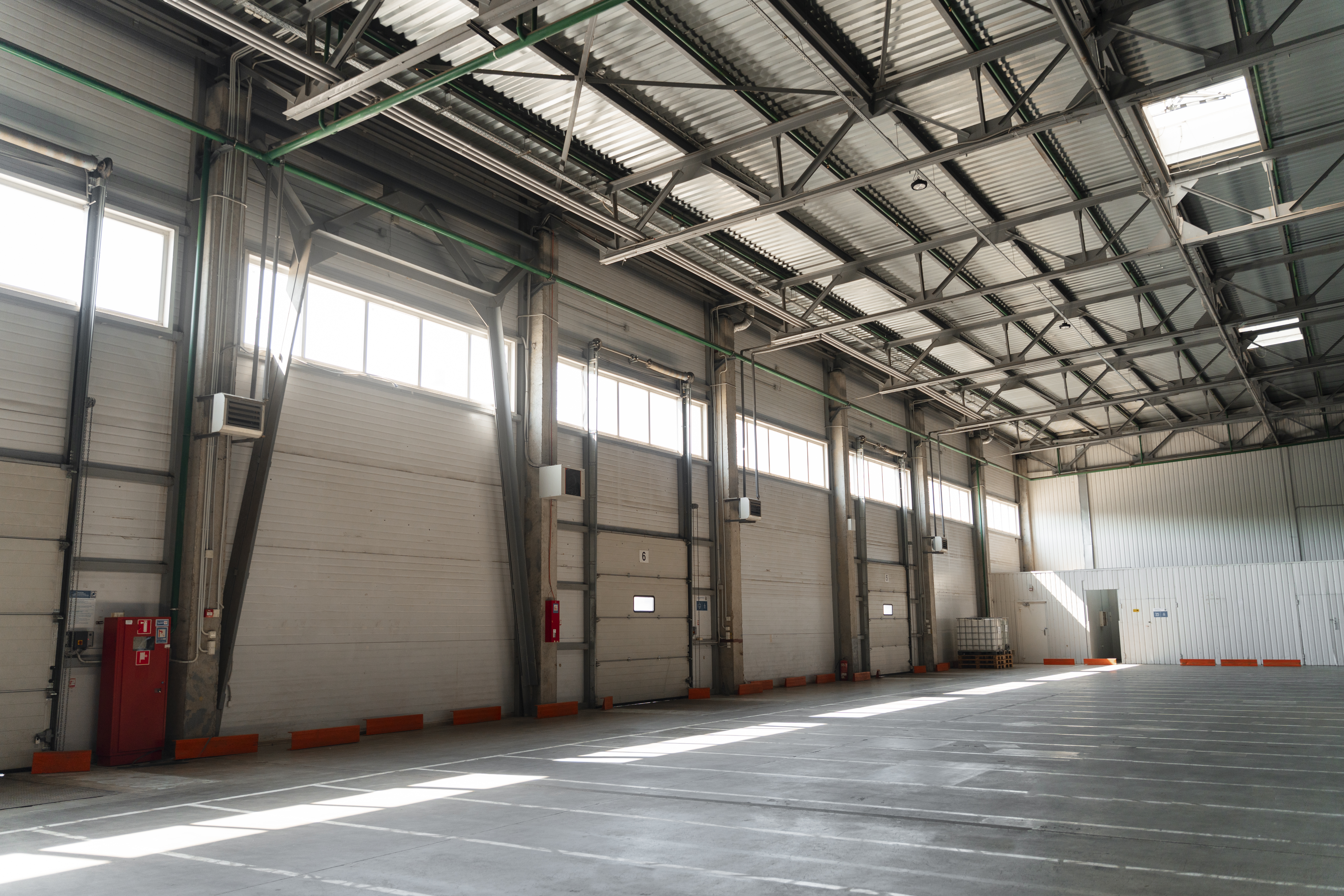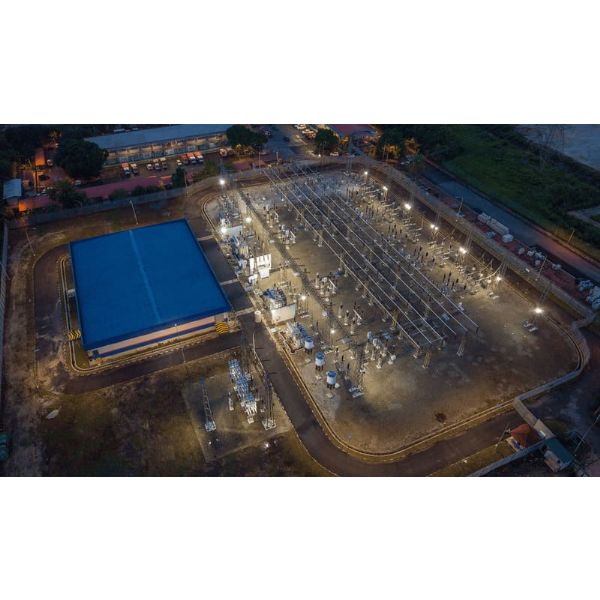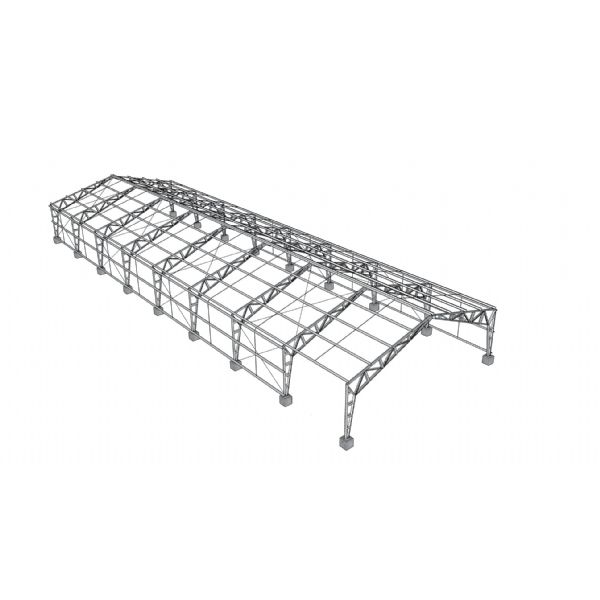In industrial construction, every element of a building must be designed to withstand demanding conditions while ensuring efficiency, safety, and long-term value. Among the most critical components is the roofing system, which protects valuable equipment, inventory, and workers from external elements. A durable and reliable roof is not only a necessity but also a strategic investment for industrial projects. This is where metal roof trusses have emerged as a modern solution, offering unmatched strength, longevity, and adaptability compared to traditional options. By combining advanced engineering with cost-effective performance, metal roof trusses are transforming the way industrial facilities are built and maintained.
Understanding Metal Roof Trusses
What Are Metal Roof Trusses?
Metal roof trusses are structural frameworks composed of interconnected steel or aluminum components that support the roof of a building. Their primary purpose is to distribute the roof load evenly across supporting walls or columns, ensuring the building remains stable and secure under various loads such as wind, snow, or heavy machinery. Compared to wood trusses, metal trusses offer superior strength, consistency, and resistance to environmental degradation. While wooden trusses can warp or crack over time, metal alternatives maintain dimensional stability and performance for decades.
Key Components of Metal Roof Trusses
Every truss is composed of three main elements: the chords, webs, and joints. The upper and lower chords form the primary load-bearing members, while the webs connect them to create triangular units that provide rigidity and strength. The joints—often welded or bolted—ensure load transfer and stability. Common materials used include galvanized steel, aluminum alloys, and weather-resistant coatings that protect against corrosion. These materials allow metal roof trusses to maintain structural integrity even in high-humidity or coastal industrial environments.
How Metal Roof Trusses Are Manufactured
The fabrication process begins with precision cutting and welding based on detailed engineering designs. Computer-controlled machinery ensures each member meets strict dimensional tolerances. After assembly, trusses undergo surface treatments such as galvanization or powder coating for corrosion resistance. Quality control is critical in industrial applications—each truss is inspected for weld quality, alignment, and load-bearing capacity before shipment. This rigorous process guarantees that metal roof trusses deliver reliable performance under the most demanding conditions.
Strength and Durability in Industrial Projects
Superior Load-Bearing Capacity
Industrial buildings often support heavy roofing systems that incorporate insulation, HVAC units, and other mechanical installations. Metal roof trusses excel in handling these loads due to their high tensile strength and rigidity. Unlike timber structures that can sag or deform under weight, metal trusses maintain their form and distribute stress evenly. Their resistance to extreme weather—such as typhoons, heavy snow, or high winds—makes them ideal for factories, logistics centers, and warehouses where reliability is paramount.
Longevity Compared to Wood
Another defining advantage of metal roof trusses is their longevity. Metal does not rot, warp, or attract termites. When properly treated with galvanization or coatings, it resists corrosion even in chemically aggressive industrial atmospheres. This durability significantly reduces replacement cycles and downtime for maintenance. In contrast, wooden trusses often require periodic treatments, repairs, and reinforcements—costs that accumulate over the life of a building.
Fire Resistance and Safety Advantages
Industrial safety standards increasingly favor non-combustible building materials. Metal roof trusses provide inherent fire resistance, ensuring that in the event of a fire, the structure maintains its load-bearing capacity longer than wood. This crucial property helps contain fires, minimizes structural collapse risks, and allows more time for evacuation. In facilities handling flammable materials, metal trusses contribute to compliance with safety codes and insurance requirements.
Cost-Effectiveness of Metal Roof Trusses
Lower Maintenance Costs
The reduced maintenance requirements of metal roof trusses make them highly cost-effective over time. Their corrosion-resistant finishes minimize the need for frequent repainting or structural reinforcement. Industrial operators can save on both labor and materials since there is little risk of deformation or pest damage. These savings accumulate across decades, lowering the total cost of ownership significantly compared to conventional wood truss systems.
Reduced Construction Time
Prefabrication is one of the biggest advantages of using metal roof trusses in industrial projects. The trusses are manufactured off-site with precision and delivered ready for installation. This reduces on-site labor requirements and accelerates project timelines. For large-scale facilities where time directly impacts revenue generation, faster assembly translates into substantial cost savings and earlier operational readiness.
Long-Term Investment Value
While the initial cost of metal roof trusses may be higher than wood alternatives, their durability and low maintenance result in superior long-term value. Over decades, the total lifecycle cost—including maintenance, repairs, and replacement—remains far lower. Additionally, industrial properties built with metal trusses often command higher market value due to their resilience, safety, and modern appearance, enhancing overall investment returns.
Design Flexibility and Applications

Versatile Design Options
Metal roof trusses are not limited to standard geometric configurations. They can be custom-engineered to meet diverse architectural and structural requirements—from simple gable designs to intricate multi-span or curved roof systems. Their inherent adaptability enables engineers and architects to optimize both form and function, balancing aesthetics with performance. Whether used in compact industrial workshops or large-scale logistics hubs, metal trusses offer exceptional design versatility and consistent load-bearing capacity across long spans.
Key design flexibility benefits include:
- Custom spans: Trusses can be designed for short, medium, or extra-long spans without compromising structural stability.
- Adaptable geometry: Configurations include parallel chord, pitched, bowstring, or space truss systems based on architectural intent.
- Architectural integration: Suitable for open-plan layouts, mezzanines, and roof-mounted equipment such as HVAC or solar arrays.
- Ease of modification: Modular and bolted connections allow future expansion or reconfiguration of industrial facilities.
This flexibility allows industrial designers to maximize space utilization, reduce interior columns, and improve workflow efficiency. As industries evolve toward automation and large-scale manufacturing, metal roof trusses provide the structural freedom necessary to accommodate equipment, conveyors, and cranes without redesigning the building envelope.
Common Industrial Applications
Because of their robustness, efficiency, and adaptability, metal roof trusses are now a preferred choice in a wide range of industrial and commercial structures. They support various roofing materials, heavy loads, and large clear spans—essential for high-volume or high-clearance operations. Below is a summary of common applications:
| Industrial Facility Type | Recommended Truss Configuration | Typical Span Range | Structural Advantages |
|---|---|---|---|
| Warehouses & Storage Facilities | Pratt or Howe Truss | 18–36 m | Provides wide, open interiors for efficient racking and logistics flow. |
| Manufacturing & Assembly Plants | Parallel Chord or Fink Truss | 20–40 m | Supports roof-mounted cranes and mechanical systems while maintaining stability. |
| Distribution & Logistics Centers | Warren or N-Truss | 25–45 m | Minimizes vertical obstructions, allowing high throughput and automation layouts. |
| Aircraft Hangars & Workshops | Bowstring or Space Truss | 40–80 m | Achieves massive clear spans for aircraft movement and maintenance zones. |
| Power Stations & Industrial Plants | Heavy-Duty Lattice Truss | 30–60 m | Withstands extreme loads, vibrations, and heat from heavy machinery and turbines. |
In all these applications, metal roof trusses enable efficient load transfer and minimize the need for interior supports—key factors that enhance productivity, safety, and design flexibility in industrial environments.
Integration with Modern Roofing Materials
The adaptability of metal roof trusses extends to their compatibility with advanced roofing materials and technologies. They form a strong structural base that supports a wide variety of systems, including standing-seam metal panels, insulated sandwich panels, translucent skylights, and solar photovoltaic modules. This integration capability ensures that industrial buildings can achieve both high performance and sustainability standards.
Modern integration examples include:
- Energy-efficient roofing: Incorporating reflective metal panels and insulation layers to enhance thermal regulation.
- Renewable energy systems: Supporting rooftop solar panels or solar thermal systems without additional substructure.
- Acoustic and thermal comfort: Allowing easy installation of soundproofing and insulation materials for controlled environments.
- Future adaptability: Enabling retrofits for energy-efficient upgrades, skylights, or ventilation systems.
By combining modern materials with engineered strength, metal roof trusses offer a complete solution that meets the evolving demands of industrial architecture. This synergy between structure and technology allows companies to reduce energy consumption, enhance operational safety, and extend the service life of their facilities.
5. Environmental and Sustainability Benefits

5.1 Energy Efficiency in Industrial Buildings
Energy performance is one of the most significant considerations in modern industrial architecture. When combined with reflective roofing materials, insulated panels, or cool roof coatings, metal roof trusses substantially improve a building’s thermal performance. Their precise design allows for seamless integration with insulation layers and ventilation systems, reducing unwanted heat gain during summer and retaining warmth in colder climates.
By minimizing heat transfer through the roof assembly, metal roof trusses contribute to lower energy consumption in HVAC systems. This translates into significant operational savings for factories, warehouses, and logistics facilities where air conditioning and heating run continuously. Enhanced insulation efficiency can reduce overall energy bills by up to 20%, depending on regional climate and building design.
Furthermore, the reflective nature of single board maintenance surfaces reduces the urban heat island effect—an increasingly important consideration for sustainability certifications. This not only lowers cooling costs but also contributes to more stable interior temperatures, ensuring comfort and safety for workers and sensitive equipment.
Additional energy efficiency benefits include:
- Thermal bridge reduction: Engineered truss connections minimize conductive heat loss between structural elements.
- Optimized ventilation: Roof designs can incorporate ridge vents or skylight systems for natural airflow and lighting.
- Compatibility with renewable energy: Structural stability supports heavy loads from solar photovoltaic or solar thermal systems.
5.2 Recyclability of Metal Roof Trusses
One of the strongest sustainability advantages of metal roof trusses lies in their recyclability. Unlike wood or composite materials that degrade or end up in landfills, metals such as steel and aluminum can be reused indefinitely without losing their mechanical properties. At the end of a building’s life cycle, truss components can be dismantled, melted, and reformed into new steel products—closing the material loop and drastically reducing waste.
This 100% recyclability significantly lowers the environmental footprint of industrial projects. Steel production from recycled sources consumes up to 60% less energy and emits considerably fewer greenhouse gases than manufacturing from raw ore. By specifying metal roof trusses made from recycled content, developers can earn additional points toward LEED and other international green building certifications.
Manufacturers of industrial steel trusses also implement eco-conscious practices, such as water recycling, energy-efficient furnaces, and the use of non-toxic coatings. These initiatives further support sustainable development and corporate social responsibility goals.
| Material Type | Recyclability (%) | Average Lifespan (Years) | Energy Consumption for Production | Environmental Impact |
|---|---|---|---|---|
| Steel Metal Roof Trusses | 100% | 50–70+ | Medium (Recycled content lowers energy use) | Low – Fully recyclable, minimal waste generation |
| Aluminum Metal Roof Trusses | 100% | 40–60 | Low to Medium (Highly efficient recycling process) | Low – Long-lasting, lightweight, and corrosion-resistant |
| Wood Trusses | 30–40% | 15–25 | Low (but limited reuse) | High – Susceptible to decay, requires chemical treatment |
5.3 Supporting Sustainable Construction Trends
Global industries are shifting toward sustainable and low-carbon construction solutions, and metal roof trusses play a pivotal role in this transformation. Their long service life, structural efficiency, and recyclability make them a cornerstone of eco-friendly building strategies. As governments implement stricter environmental regulations, using steel trusses aligns industrial projects with national and international sustainability targets.
Modern truss design and fabrication processes have become increasingly green. Many manufacturers use renewable electricity, optimize material usage through digital modeling, and reduce transportation emissions by adopting prefabrication near project sites. These measures collectively decrease the carbon footprint of construction and improve lifecycle performance.
In addition, the modular nature of metal roof trusses supports disassembly and reuse, an emerging concept in circular construction. Components can be relocated, reinstalled, or adapted for future expansions, minimizing raw material consumption. This approach not only saves cost but also contributes to a circular economy model where building materials retain value beyond their first lifecycle.
Governments and organizations now offer incentives, tax deductions, or faster permit approvals for projects demonstrating measurable sustainability performance. Industrial developers adopting metal roof trusses benefit from these programs while positioning their facilities as environmentally responsible investments.
Key sustainability takeaways:
- Improved energy efficiency through thermal regulation and solar compatibility.
- Full recyclability and reduced demand for virgin materials.
- Alignment with LEED, BREEAM, and ISO 14001 environmental standards.
- Contribution to corporate ESG goals and long-term operational savings.
Overall, metal roof trusses embody the principles of sustainable construction—strength, efficiency, longevity, and environmental responsibility. As the industrial sector moves toward greener, smarter buildings, these systems provide a durable and eco-conscious foundation for the future of global infrastructure.
Choosing the Right Metal Roof Trusses for Your Project
Factors to Consider Before Installation
Selecting the right metal roof trusses involves evaluating several factors. Key considerations include span length, roof pitch, load capacity, and compliance with local building codes. Environmental conditions such as humidity, chemical exposure, or seismic activity also influence material selection. Collaborating with structural engineers ensures that the chosen truss system delivers both strength and efficiency tailored to your project’s specific needs.
Working with Professional Fabricators
Partnering with certified and experienced fabricators ensures the quality and reliability of metal roof trusses. Professional manufacturers follow strict design standards and testing procedures to guarantee that each truss meets safety and performance benchmarks. This partnership minimizes on-site issues, reduces project delays, and ensures that every component fits precisely within the overall building framework.
Future of Metal Roof Trusses in Industrial Construction
The future of metal roof trusses is shaped by innovations in design, automation, and sustainability. Advanced CAD/CAM technologies enable greater customization, while lightweight alloys and high-strength coatings enhance performance. With increasing demand for green buildings and modular construction, metal trusses will continue to play a central role in the development of efficient, sustainable industrial infrastructure.
Conclusion
In summary, metal roof trusses offer a combination of strength, durability, and adaptability unmatched by traditional roofing systems. Their cost-effectiveness, rapid installation, and environmental benefits make them an ideal choice for modern industrial projects. Whether building a large-scale warehouse, a manufacturing facility, or a logistics hub, investing in metal trusses ensures long-term structural reliability, reduced operational costs, and compliance with sustainable construction standards. For decision-makers seeking efficiency, safety, and value, metal roof trusses represent not just a construction solution—but a strategic investment in the future of industrial architecture.






